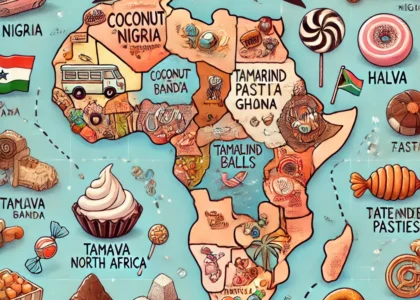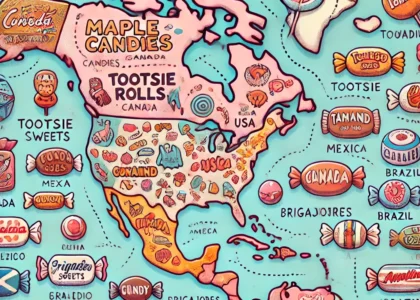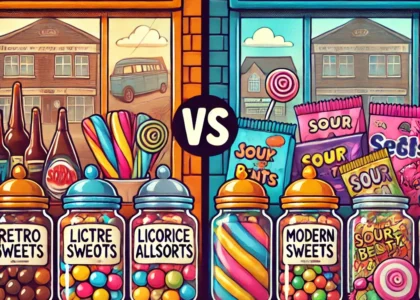Introduction
Retro sweets are more than just a nostalgic indulgence; they are a cultural lens into the evolving tastes, technologies, and marketing strategies of the 20th century. From the 1970s through the 1990s, the United Kingdom experienced a vibrant confectionery revolution, resulting in a vast array of sweets that captivated children and adults alike. While many classic treats, such as Sherbet Fountains or Fruit Salads, remain well-known, there exists a lesser-known subset of rare retro sweets—candies that were either produced in limited quantities, discontinued, or introduced as experimental flavours and formats. These rare sweets offer fascinating insights into consumer behaviour, brand innovation, and the confectionery economy of the era.
This article explores some of the most elusive retro sweets, their historical context, production background, and where collectors and enthusiasts can find them today.
Historical Context of Retro Sweets in the UK
The mid-to-late 20th century marked significant shifts in the UK confectionery landscape. Following post-war rationing, the 1970s introduced increased industrial production techniques, which allowed for mass manufacturing of sugar-based confections. Sweet brands such as Barratt, Swizzels Matlow, and Taveners began experimenting with novel textures, flavours, and packaging, aiming to capture a growing consumer base of children with disposable pocket money.
By the 1980s, confectionery marketing had matured into a sophisticated industry with television advertisements, colourful packaging, and interactive products designed to create an experiential connection with consumers. Limited edition and experimental sweets became popular as companies sought to differentiate themselves in an increasingly competitive market. By the 1990s, retro sweets were not only a staple for children but had started attracting nostalgic adults, creating a secondary market for rare and collectible candies.
Categories of Rare Retro Sweets
Rare retro sweets can generally be classified into three categories:
1. Discontinued Classics
These sweets were popular during their initial release but eventually phased out due to declining sales, changes in consumer preference, or brand consolidation.
- Fizzy Cola Bottles (1970s): A chewy cola-flavoured gummy shaped like miniature soda bottles. Loved for its realistic shape and tangy taste, this candy was phased out in the late 1980s as new fizzy sweets emerged.
- Sherbet Tablets (1980s): Small, individually wrapped tangy tablets, often sold in multi-packs. Despite their innovative fizzy experience, they were discontinued due to production costs and competition from dip-style products like Dip Dabs.
2. Experimental or Limited Editions
Some rare retro sweets were produced for short promotional runs or to test consumer reaction to new flavours.
- Chocolate-Covered Fruit Salads (1990s): A hybrid sweet combining chewy fruit flavours with chocolate coating. Produced by Barratt for a brief experimental window, these sweets are now highly sought after by collectors.
- Flavoured Fizzy Lollipops: Limited runs featuring unusual combinations like blackcurrant lemonade fizz were popular in select UK regions.
3. Region-Specific Confections
Certain sweets were produced for local markets or specific regions, making them rare outside those areas.
- Localised Pick n Mix Exclusives: Some corner shops and small-scale manufacturers produced unique sweets sold only in a specific town or city.
- Festival or Holiday Exclusives: Sweets created for seasonal events or fairs, such as mini sherbet fountains at summer fairs, are now considered collectibles.
Factors Contributing to Rarity
Understanding why some retro sweets are rare requires examining both market dynamics and production strategies:
- Limited Production Runs: Some brands tested new flavours in small quantities, limiting distribution.
- Changing Consumer Preferences: Shifts in taste, such as a move away from strong aniseed or licorice flavours, led to the discontinuation of certain sweets.
- Health and Safety Regulations: Some ingredients or formulations used in the 1970s and 1980s were later restricted, making it impossible to reproduce the original recipe.
- Brand Consolidation: Mergers and acquisitions often led to older product lines being discontinued in favour of more profitable sweets.
Iconic Examples of Rare Retro Sweets
1. Fizzy Cola Bottles
Originally released in the mid-1970s, these miniature gummies captured the fizzy experience of soda in a chewy candy. Their detailed bottle shapes and tangy flavour made them a novelty. While Barratt and other confectioners occasionally release “retro editions,” the original formula is nearly impossible to find.
2. Chocolate-Covered Fruit Salads
These experimental 1990s hybrids attempted to combine chewy fruit flavours with chocolate, predating modern trends of chocolate-coated fruit candies. Few production batches were made, and most were consumed quickly, making unopened packs extremely rare.
3. Sherbet Tablets
Produced primarily in the 1980s, these fizzy tangy tablets were a precursor to Dip Dabs. They were marketed in small packs, often sold in corner shops or at school tuck shops, and eventually discontinued due to high production costs and the rise of more interactive candies.
4. Flavoured Fizzy Lollipops
Limited-edition flavours such as blackcurrant lemonade fizz were regional hits. Collectors value these for their unique flavour profiles and nostalgic packaging, often featuring bold, colourful artwork from the 1980s.
5. Seasonal and Festival Exclusives
Sweets made exclusively for fairs or holidays, such as mini sherbet fountains for summer fairs, were produced in limited numbers and often consumed immediately, resulting in their rarity today.
Collecting and Preserving Rare Retro Sweets
For enthusiasts and collectors, preserving rare retro sweets requires careful handling:
- Temperature Control: Sweets should be stored in a cool, dry environment to prevent melting, hardening, or flavour degradation.
- Packaging Preservation: Original wrappers, tins, and boxes significantly increase the collectible value.
- Avoid Consumption (if Collecting): While it may be tempting, consumption reduces historical and collector value.
- Documenting Provenance: Noting the production year, brand, and region enhances historical context and authenticity.
Where to Find Rare Retro Sweets Today
While rare retro sweets are challenging to locate, several avenues exist:
- Online Marketplaces: eBay and Amazon often have listings from collectors or small vendors.
- Retro Sweet Shops: Some UK-based shops curate rare or limited-edition retro sweets, occasionally including exclusive regional confections.
- Collector Networks: Online forums and Facebook groups dedicated to retro sweets can connect buyers with sellers of rare items.
- Auctions and Vintage Fairs: Certain fairs and auction houses occasionally feature unopened or hard-to-find retro sweets.
Cultural and Historical Significance
Rare retro sweets serve as cultural artefacts, reflecting broader trends in UK society:
- Advertising Evolution: Many rare sweets were introduced alongside bold TV campaigns, reflecting the power of media in shaping children’s tastes.
- Regional Preferences: Some rare candies illustrate local culinary preferences, showing how geography influenced confectionery production.
- Innovation in Confectionery: Limited editions and experimental sweets highlight the innovation strategies of brands navigating competitive markets.
Conclusion
Rare retro sweets are more than sugary indulgences; they are historical artefacts, collector’s items, and cultural touchstones. From the tangy Fizzy Cola Bottles of the 1970s to the experimental Chocolate-Covered Fruit Salads of the 1990s, these elusive candies reveal the ingenuity of UK confectioners and the shifting tastes of consumers. Today, these rare sweets continue to captivate collectors, nostalgic adults, and curious enthusiasts alike, serving as both a sweet treat and a tangible connection to the past.
Keywords: retro sweets 70s, retro sweets 80s, retro sweets UK brands, old fashioned sweets from the 70s





